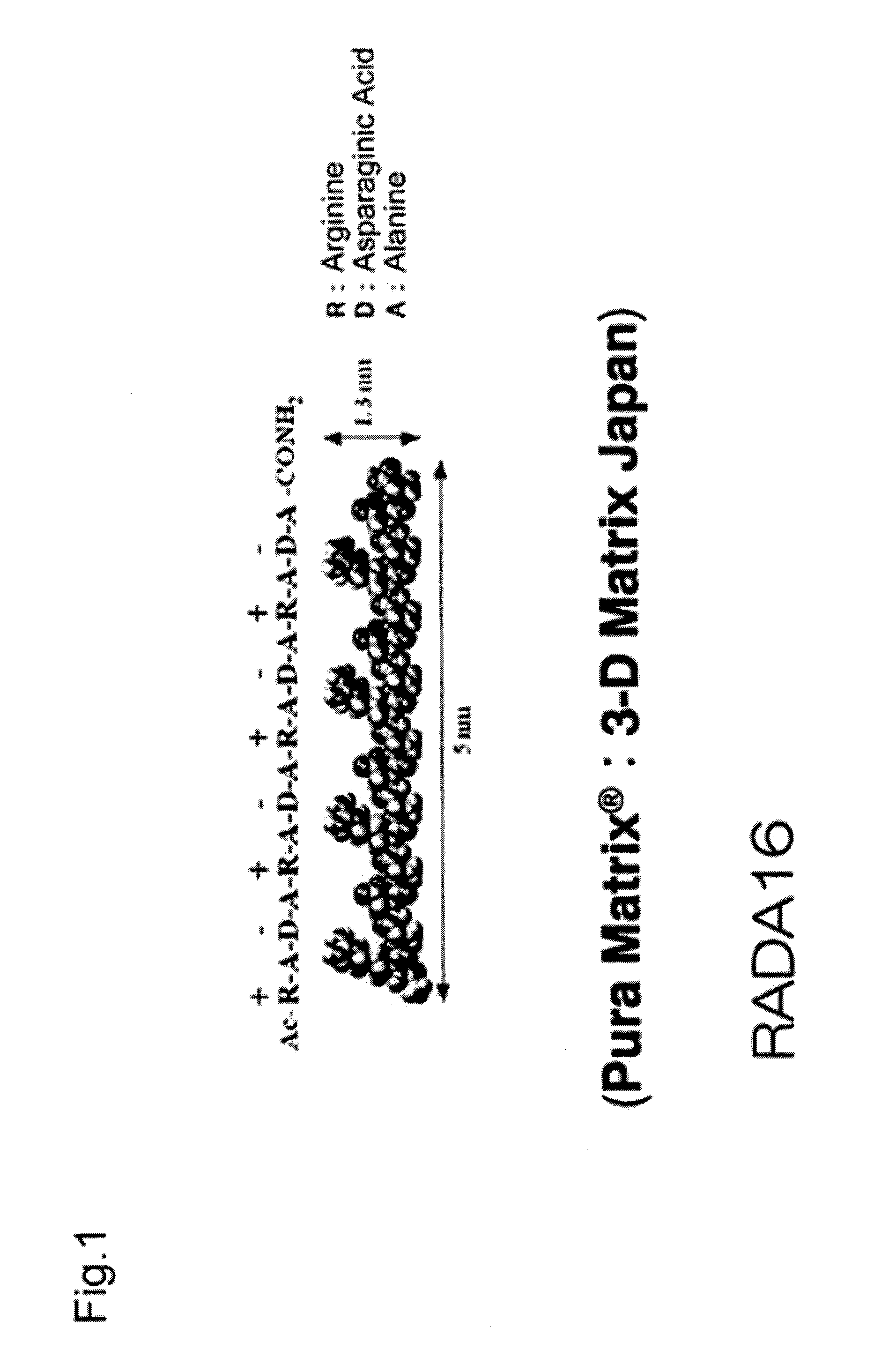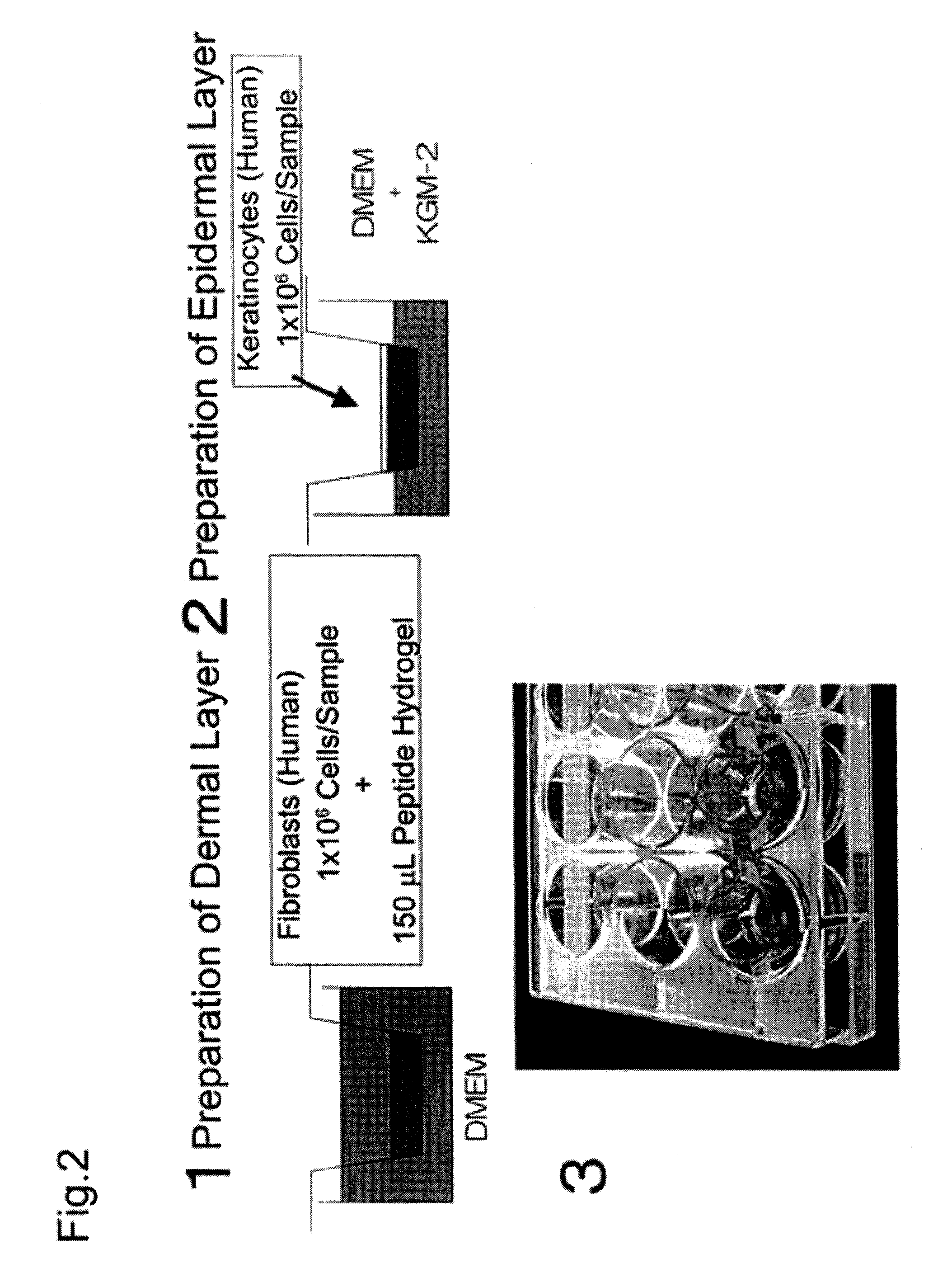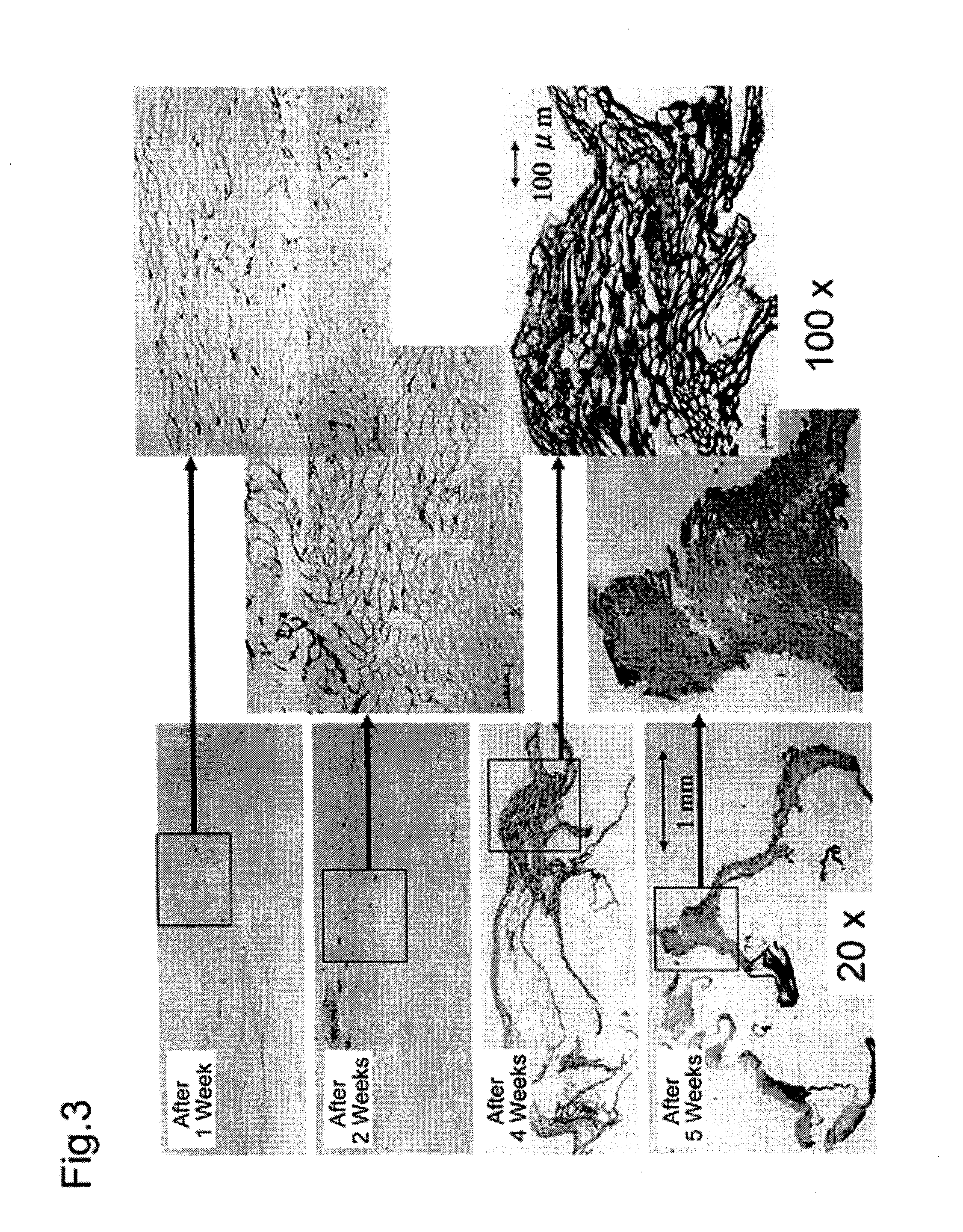Method for producing artificial skin
a skin and artificial technology, applied in the field of artificial skin production, can solve the problems of a potential risk of unknown infections, and a two-dimensional culture of only cells, and achieve the effects of no cytotoxic effect, no cytotoxic effect, and easy mixing
- Summary
- Abstract
- Description
- Claims
- Application Information
AI Technical Summary
Benefits of technology
Problems solved by technology
Method used
Image
Examples
example 1
Method for Producing Artificial Skin
[0061](1) Cell expansion (cell culture)
[0062]Neonatal human dermal fibroblasts (Lonza Walkersville, Walkersville, Md.) were subcultured 8 to 10 times in a culture flask using D-MEM medium (Lonza Walkersville, Walkersville, Md.) supplemented with 10% FBS (Invitrogen, Carlsbad, Calif.), and the cultured fibroblasts were used for the experiment. Neonatal human epidermal keratinocytes (Lonza Walkersville, Walkersville, Md.) were subcultured 4 or 5 times in a culture flask using KGM-2 medium (Lonza Walkersville, Walkersville, Md.), and the cultured keratinocytes were used for the experiment. Table 1 gives a summary of specific materials, reagents, and samples.
TABLE 1MaterialsPura Matrix (Peptide hydrogel): 3D matrix CompanyNormal human dermal fibroblasts (neonatal skin): Lonza CompanyHigh glucose Dulbecco's Modified Eagle's Medium (D-MEM): InvitrogenCorporationFetal Bovine Serum (FBS): Invitrogen CorporationPenicillin: Invitrogen CorporationStreptomyci...
example 2
[0092]Following the same method as described in Example 1, skin was collected from the dorsal region of male Hairless rats weighing 250 to 300 g, and fibroblasts and epidermal keratinocytes were collected and grown, thereby preparing a hybrid artificial dermal material. A 5 mm long incision was placed in the dorsal region of the rats, and subcutaneous tissue was removed to prepare a pocket. The artificial dermis was inserted into the pocket, and then the incision was sutured. The rats were divided into five groups, each group containing three rats. After embedding the artificial dermis, the embedded portions and peripheral tissue were collected from these five groups after 1, 2, 3, 4 and 5 weeks, respectively, and a histopathological evaluation was made.
PUM
| Property | Measurement | Unit |
|---|---|---|
| pH | aaaaa | aaaaa |
| pore size | aaaaa | aaaaa |
| volume | aaaaa | aaaaa |
Abstract
Description
Claims
Application Information
 Login to View More
Login to View More - R&D
- Intellectual Property
- Life Sciences
- Materials
- Tech Scout
- Unparalleled Data Quality
- Higher Quality Content
- 60% Fewer Hallucinations
Browse by: Latest US Patents, China's latest patents, Technical Efficacy Thesaurus, Application Domain, Technology Topic, Popular Technical Reports.
© 2025 PatSnap. All rights reserved.Legal|Privacy policy|Modern Slavery Act Transparency Statement|Sitemap|About US| Contact US: help@patsnap.com



